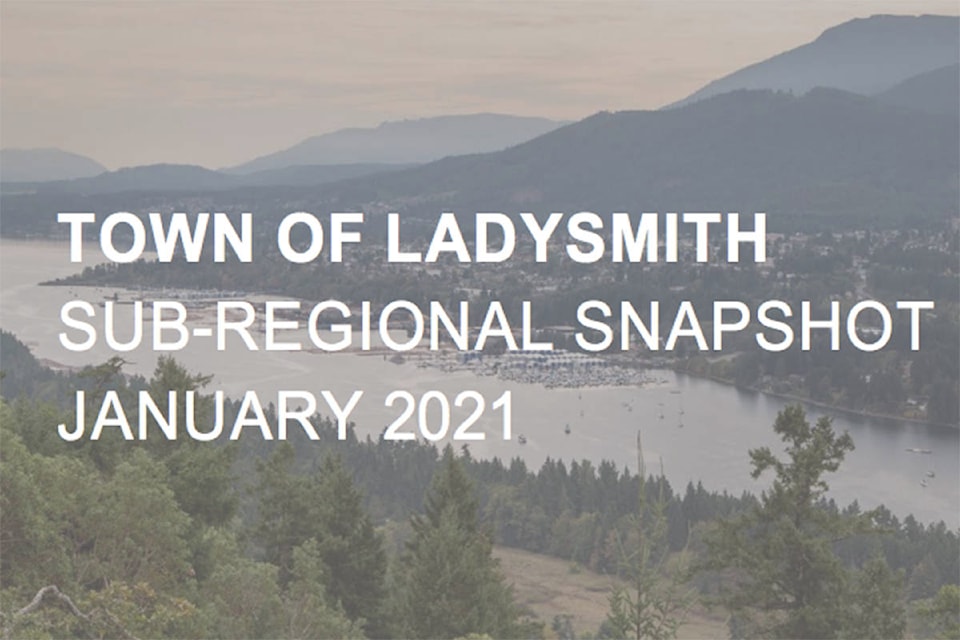In Ladysmith, a projected 2,919 households will need only one bedroom in 2025 — that’s an increase of 384 units from 2019 levels — according to a sub-regional snapshot on housing in Ladysmith.
The sub-regional report was prepared as part of a CVRD wide housing needs report. The housing needs report is intended to demonstrate what kinds of housing will be needed in the region over the next five years.
RELATED: Cowichan simply doesn’t have enough homes for growing population
Ladysmith is projected to grow from 8,762 residents in 2019 to 10,063 residents in 2025, an increase of 15 percent in six years. The report estimates that 510 units of housing are needed to keep pace with Ladysmith’s population growth.
“Interviews with 11 local developers and realtors indicate that housing demand in Ladysmith is greater than supply at present,” the report states.
In B.C. as a whole, renters made up 32 percent of all households; however, only 19 percent of all households in Ladysmith are rentals. Ladysmith has higher rental rates than compared to Duncan, and similar rental rates to North Cowichan.
“Ladysmith has an average rent cost of $950. Renters with an income up to $22,902 are spending 42% of their income on rent and utilities for a one-bedroom and 80% of their income for a two-bedroom,” the report states.
“Respondents share stories of facing barriers to finding rental options in Ladysmith due to rental restrictions, previous homelessness, owning pets and having young children.”
The report also found that the lowest rental rate per unit that a builder could afford to charge was $1,240 a month for a newly built apartment in Ladysmith. A renter would need to earn a minimum of $59,000 to afford a new apartment rental without spending over 30 percent of their household income.
“More affordable new units may exist, but these would arise from exceptional circumstances, such as unusually cheap land or government subsidies and incentives,” the report said.
RELATED: LRCA receives first ever Cowichan Housing Association grant
“Engagement results identified the need for more rental options. In particular, young families, youth, Indigenous people, those with mental health challenges, singles and seniors face additional pressure to find rental housing.”
Ladysmith has a greater share of ground-oriented multi-unit dwellings than other CVRD electoral areas. Single-detached houses make up the largest portion of the housing supply at 68 percent, apartments make up the next largest portion of housing at 10 percent.
Of those houses, 24 percent are older than 1961. Only five percent of units are one-bedrooms, while 27 percent are two-bedrooms, 41 percent are three-bedrooms, and 27 percent are four-bedrooms.
Single-detached homes were the most desirable and expensive form of housing in Ladysmith. The average cost of a single-detached homes was $300,000 - $450,000, but from 2017 to 2019, prices increased considerably across all unit types — a trend across southern British Columbia. An average household income of $125,000 is considered the minimum to afford a single-detached home in Ladysmith.
RELATED: High demand and low inventory drive a competitive housing market in Ladysmith
